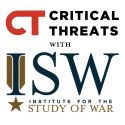Iran Update, November 17, 2023
Nov 17, 2023 - ISW Press
Israeli forces continued advancing eastwards from the al Shifa Hospital, which is consistent with Israeli efforts to establish evacuation corridors for civilians moving west-to-east in Gaza City. Local Palestinian sources reported that Israeli forces fought Palestinian militia fighters near the al Samer roundabout on November 17, just west of the al Ahli Hospital. The Palestinian Red Crescent Society said that Israeli forces “surrounded” the hospital on November 17. Israeli forces have repeatedly established safe corridors and evacuation routes to facilitate the departure of civilians. The IDF announced an evacuation route east from al Shati Camp to Salah al Din Road on November 14 and declared a unilateral tactical pause between 1000 and 1600 local time to facilitate evacuations. The IDF also declared an evacuation route east from al Shifa Hospital on November 13. Hamas fighters fired upon this evacuation route from al Shifa Hospital, according to Israeli officers.










